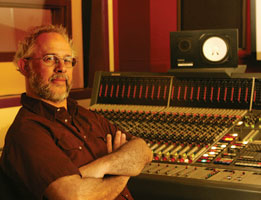|
|
The Client |
November 2005 |
|
When not working in my personal studio, I've spent most of my studio time as a hired gun, working for clients or producers. I had not been a client for many years. But recently, I began producing the first EM Seminar on Demand (SOD) video, or ’ÄúWebinar,’Äù which will be presented on the emusician.com site.
Since video production isn't my area of expertise, I arranged for studio time at a school that specializes in digital media production and hired some graduating students to do the videography and editing. The school administrators were a pleasure to work with and I enjoyed the student team's youthful creativity, but I also observed several classic examples of how to make a client crazy. It was a good reminder of how our clients feel when things go wrong.
I arrived at the studio on time, with the onscreen talent in tow. The production team wasn't ready, however, so we waited for several hours. We were doing a three-camera shoot, but nobody had a mount for the overhead camera (even though I had provided a list of what we would need), so the camera team improvised by duct-taping the camera to a boom. That required a lengthy struggle, but it worked. When we needed to change the videotape, the crew had to cut down the camera, swap tapes, and refasten the camera to the boom. I wasn't impressed with the crew's preparation and efficiency, but I liked their ability to improvise.
After the shoot, the lead engineer was to transfer the videotapes to the computer for editing in Final Cut Pro, sync the Pro Tools sessions, and set up an editing session with me. I arrived at the agreed time, only to find that the engineer had stood me up. I later learned that he had given the master tapes to another student engineer, whom he had asked to take over the session ’Äî but no one else had been told about that. As it turned out, the new engineer had other commitments and couldn't do the job, so I had waited in vain.
Worse, the master tapes were taken off site without any safety backups or security measures ’Äî a stunning violation of standard studio procedures. The talent could not have returned for another shoot, so had those tapes been lost or damaged, I wouldn't have been able to complete the project. I stayed cool, knowing I was dealing with students. But if I ever needed a reminder about how a client feels when he hires a production team that doesn't have its act together, I sure got it. I thought it was obvious that having technical skills doesn't overcome a lack of preproduction, planning, reliability, and professionalism; but apparently, that isn't obvious to everyone.
The good news is that we captured some great material, and the SOD should be available for free at emusician.com by the time you read this. The lesson features Korg USA sound-design guru Jack Hotop demonstrating how you can customize several types of synth sounds to make them more expressive and better suited to your individual style. Hotop is gracious and entertaining, and a fine instructor, and his tips work with most hardware and software synths. While you're viewing the SOD, remember the lessons that lurk behind the scenes: be prepared for each session, and remember how it feels to be the client. |
